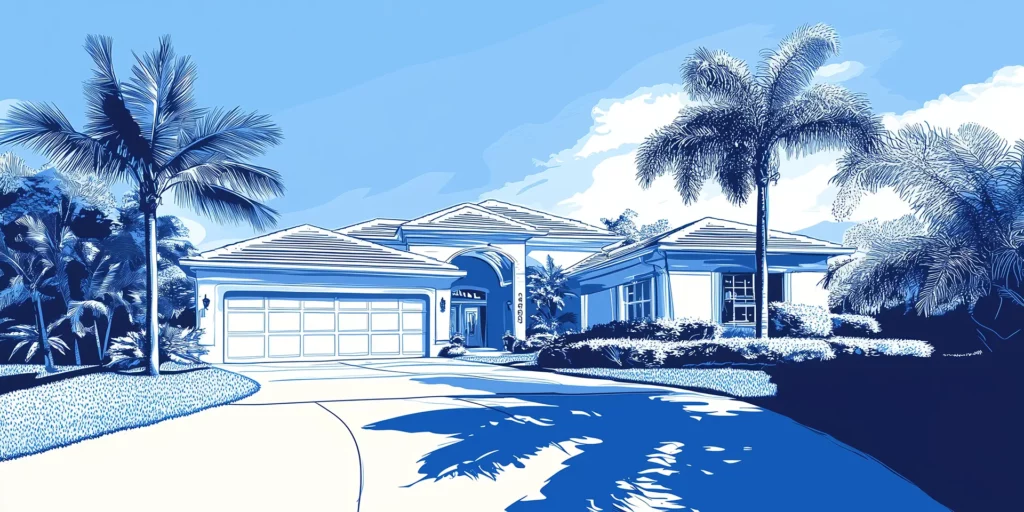Understanding insurance can be tricky, especially when it comes to flood vs home insurance. If you live in Fort Myers, knowing the difference is critical. Homeowners insurance won’t protect your property from flood damage, leaving you at risk. This guide will break it all down, so you can protect what matters most.
Living in a place like Fort Myers, Florida, means you’re no stranger to storms and heavy rains. But have you thought about how these weather events could impact your home? Many homeowners mistakenly believe their standard homeowners insurance protects them from everything. It doesn’t. One of the most misunderstood aspects is the difference between flood vs home insurance.
Floods are the most common natural disaster in the U.S. According to FEMA, just one inch of floodwater can cost over $25,000 in damages. Yet, standard homeowners insurance doesn’t cover flood damage. For residents in Fort Myers, a city prone to hurricanes and heavy storms, this could leave you vulnerable to massive repair bills. Understanding these differences can help you safeguard your property and finances.
What is Flood Insurance?
Definition of Flood Insurance
Flood insurance is a type of coverage that protects you financially when nature takes over. It specifically covers damage caused by flooding. But what exactly counts as a flood? Insurance defines it as water covering at least two acres of normally dry land or affecting two or more properties.
This includes water from heavy rains, hurricanes, storm surges, or overflowing rivers. If these cause damage to your home, flood insurance steps in. Without it, even minor flooding could leave you paying thousands out-of-pocket.
Why Flood Insurance is Important
Flood damage is costly—far more than people expect. The average flood claim over the past decade was nearly $70,000, according to the National Flood Insurance Program (NFIP). Many think they’re safe if they don’t live near water, but flooding can happen anywhere.
Here are key reasons why flood insurance is important:
- Homeowners insurance doesn’t cover floods. If water enters your home from outside, your policy likely won’t help.
- Floods are unpredictable. Nearly 25% of flood claims come from homes outside high-risk areas.
- Financial protection. Even a few inches of water can destroy flooring, walls, and personal items.
For Fort Myers residents, heavy rain and storm surges make flooding a real risk. Taking precautions now could save you major expenses later.
How Flood Insurance Works
Flood insurance works differently than standard homeowners insurance. You can buy it through the NFIP or private insurance companies. While it won’t cover everything, it can make a huge difference.
Typically, flood insurance covers:
- Building structure: walls, foundation, plumbing, and electrical systems.
- Major systems: HVAC, water heaters, and fuel tanks.
- Detached structures: like garages, as long as they’re not used for business.
But there are some things it doesn’t cover:
- Personal items stored in basements.
- Outdoor property, like landscaping and swimming pools.
- Temporary housing costs if you can’t live in your home during repairs.
Most policies have a 30-day waiting period before coverage kicks in. This means you can’t wait for hurricane season’s approach to consider it. Protecting your home ahead of time is key to avoiding massive post-disaster costs.
Understanding how flood vs home insurance works can give you clarity—and peace of mind.
Key Differences Between Flood Insurance and Standard Homeowners Insurance
What Homeowners Insurance Covers
Homeowners insurance is your go-to for many common hazards, but it has limits. Typically, it protects your home and belongings from specific risks. These risks, called “perils,” include things like fire, theft, and certain types of storm damage.
However, there’s a big gap in coverage. Homeowners insurance doesn’t cover flooding. This means if a storm surge or heavy rainfall sends water into your home, you’re likely on your own without flood insurance.
Here’s what homeowners insurance usually covers:
- Physical structure: Damage from events like fires or windstorms.
- Personal property: Theft, vandalism, or damage to items inside the home.
- Liability protection: Injuries on your property.
- Additional living expenses (ALE): If you need temporary housing due to covered damage.
While those protections are broad, flooding is listed as an “excluded peril” in most policies. That’s where flood insurance steps in, offering protection that homeowners insurance lacks.
How Coverage Limits and Requirements Differ
Flood vs home insurance coverage differs widely, especially when it comes to limits and requirements. Flood insurance is often mandatory for certain properties. If you live in a high-risk flood zone, lenders will typically require you to have it.
The Federal Emergency Management Agency (FEMA) uses flood maps to decide risk levels. Areas with a higher chance of flooding will have stricter requirements. Even outside these zones, it’s worth considering flood insurance due to unpredictable weather events.
Here’s a breakdown of key differences:
- Homeowners insurance: Not required by lenders but advised for all homeowners.
- Flood insurance: Mandatory for homes in high-risk flood zones if you have a mortgage.
- Special coverage limit: FEMA caps NFIP flood policies at $250,000 for building coverage and $100,000 for personal belongings.
Having both types of insurance gives you a full safety net, particularly in areas with severe weather like Fort Myers.
Pricing and Policy Acquisition
When it comes to cost, flood vs home insurance pricing can vary greatly. Homeowners insurance typically ranges from $1,200 to $1,500 annually in Florida, but flood insurance depends heavily on location and risk.
For flood insurance:
- Location matters. High-risk areas mean higher premiums.
- Property details influence rates. Elevation and home construction impact costs.
- Average premium: NFIP policies cost around $700 a year, though it can be lower in low-risk zones.
Many homeowners wonder if bundling policies reduces costs. While bundling can save money for auto and home insurance, flood insurance is separate. It’s usually bought independently or through the NFIP.
Understanding these differences helps you decide what coverage fits your needs. Both policies protect your home but from very different threats. Together, they ensure you’re prepared for the unexpected.
Key Differences Between Flood Insurance and Standard Homeowners Insurance
What Homeowners Insurance Covers
Homeowners insurance is your go-to for many common hazards, but it has limits. Typically, it protects your home and belongings from specific risks. These risks, called “perils,” include things like fire, theft, and certain types of storm damage.
However, there’s a big gap in coverage. Homeowners insurance doesn’t cover flooding. This means if a storm surge or heavy rainfall sends water into your home, you’re likely on your own without flood insurance.
Here’s what homeowners insurance usually covers:
- Physical structure: Damage from events like fires or windstorms.
- Personal property: Theft, vandalism, or damage to items inside the home.
- Liability protection: Injuries on your property.
- Additional living expenses (ALE): If you need temporary housing due to covered damage.
While those protections are broad, flooding is listed as an “excluded peril” in most policies. That’s where flood insurance steps in, offering protection that homeowners insurance lacks.
How Coverage Limits and Requirements Differ
Flood vs home insurance coverage differs widely, especially when it comes to limits and requirements. Flood insurance is often mandatory for certain properties. If you live in a high-risk flood zone, lenders will typically require you to have it.
The Federal Emergency Management Agency (FEMA) uses flood maps to decide risk levels. Areas with a higher chance of flooding will have stricter requirements. Even outside these zones, it’s worth considering flood insurance due to unpredictable weather events.
Here’s a breakdown of key differences:
- Homeowners insurance: Not required by lenders but advised for all homeowners.
- Flood insurance: Mandatory for homes in high-risk flood zones if you have a mortgage.
- Special coverage limit: FEMA caps NFIP flood policies at $250,000 for building coverage and $100,000 for personal belongings.
Having both types of insurance gives you a full safety net, particularly in areas with severe weather like Fort Myers.
Pricing and Policy Acquisition
When it comes to cost, flood vs home insurance pricing can vary greatly. Homeowners insurance typically ranges from $1,200 to $1,500 annually in Florida, but flood insurance depends heavily on location and risk.
For flood insurance:
- Location matters. High-risk areas mean higher premiums.
- Property details influence rates. Elevation and home construction impact costs.
- Average premium: NFIP policies cost around $700 a year, though it can be lower in low-risk zones.
Many homeowners wonder if bundling policies reduces costs. While bundling can save money for auto and home insurance, flood insurance is separate. It’s usually bought independently or through the NFIP.
Understanding these differences helps you decide what coverage fits your needs. Both policies protect your home but from very different threats. Together, they ensure you’re prepared for the unexpected.
Specific Considerations for Residents of Fort Myers, Florida
Understanding Your Flood Risk in Fort Myers
Fort Myers is not just a sunny paradise—it’s also prone to heavy storms, hurricanes, and flooding. Because of its location on the Gulf Coast, the city faces significant risks from storm surges and torrential rains.
Here are some key facts:
- Fort Myers is part of a high-risk hurricane zone.
- Heavy rains during wet seasons can quickly overwhelm drainage systems and cause flooding.
- Hurricane Ian in 2022 caused widespread flooding, displacing thousands of residents and resulting in billions of dollars in damage.
Many homes in Fort Myers are built near waterways or on low-lying land, increasing the flood risk. Even properties that aren’t in FEMA-designated flood zones have been affected by unexpected storms. Comparing flood vs home insurance becomes especially important in areas like this, where flooding is not always obvious but very real.
State Regulations and Local Requirements
Florida has unique rules when it comes to flood insurance. Homes in high-risk zones with federally backed mortgages are legally required to have flood insurance. This applies to many properties in Lee County and Fort Myers.
Here are some other specifics to know:
- State laws require certain disclosures about flood risks when buying property.
- FEMA’s flood maps can help you determine if your property falls into a mandatory flood zone.
- Florida law caps the flood policy coverage purchased through the NFIP, meaning some homeowners opt for additional coverage from private insurers.
Be sure to double-check flood zone classifications regularly. FEMA updates the maps periodically, and a reclassification can affect your requirements.
Mitigation Tips for Residents
Fort Myers residents can take steps to reduce flood risks—and even lower their flood insurance premiums. Simple changes to your home and property can help protect you from damage when storms hit.
Try these ideas:
- Elevate critical systems. Raise HVAC units, water heaters, and electrical panels above projected flood levels.
- Install flood barriers. Door barriers and flood-resistant seals can keep water from entering your home.
- Improve landscaping. Adjust grading so that rainwater flows away from your foundation. Adding native plants can also improve drainage.
- Secure outdoor items. During storms, move patio furniture and equipment indoors to avoid causing damage.
Making these upgrades can reduce flood-related damage significantly. Plus, some insurers may provide discounts for these proactive measures.
Living in a vulnerable area doesn’t mean you have to feel unprepared. The right mix of flood insurance, homeowners insurance, and smart mitigation strategies can give you confidence—even during storm season.
How to Choose the Right Policy
Comparing Policies and Coverage Levels
Choosing the right insurance policy can feel overwhelming, but breaking it into steps makes it easier. When it comes to flood vs home insurance, understanding coverage levels is key. Each policy type protects you from different risks. The goal is finding a balance that covers all the major threats to your home.
Here’s how to compare policies:
- Figure out your risks. Are you in a flood-prone area? Use FEMA flood maps to know your zone.
- Assess coverage needs. Consider the cost of replacing your home and belongings. Does the policy fully protect your investment?
- Review what’s excluded. Look closely at what’s not covered. For example, homeowners insurance won’t help after a flood, and flood insurance usually skips over landscaping and basement items.
- Check coverage limits. The NFIP caps flood insurance coverage to $250,000 for your home and $100,000 for belongings. If you need more, a private policy might be better.
Ask your insurance agent for a detailed explanation of each policy. It’s also important to review how deductibles work—and make sure you’re financially ready to cover them if disaster strikes.
Working with a Local Insurance Agency
Having local experts on your side can make all the difference when you’re deciding between flood vs home insurance. A local insurance agency understands the unique risks of living in Fort Myers. They know the area’s history of hurricanes, storm surges, and flooding. This insight helps them guide you to the right coverage for your home.
Here’s how a local agency can help:
- Personalized advice. Instead of a generic policy, they’ll recommend coverage tailored to your neighborhood and property.
- Simplifying complex terms. Insurance jargon can be confusing. Agents can break it down so you fully understand your policy.
- Support during claims. If disaster strikes, they’ll help you file claims quickly and accurately.
When you work with a local agency, you’re not just a number. You’re a neighbor. They’ll take the time to ensure your home is protected, leaving you with valuable peace of mind.
Choosing the right mix of insurance means looking at your unique situation. With every home and family having different needs, the right guidance can ensure you’re fully covered no matter what comes your way.
Understanding flood vs home insurance is crucial for protecting your home and finances. While homeowners insurance covers many risks, it doesn’t include floods. Flood insurance can fill that gap, offering coverage for natural disasters unique to places like Fort Myers. Whether you live in a high-risk flood zone or not, it’s worth exploring these policies to ensure you’re fully prepared.
With expert guidance from a local agency, you can choose the right policy for your needs. Don’t leave your home unprotected. Contact us today to get personalized advice or a quote.







